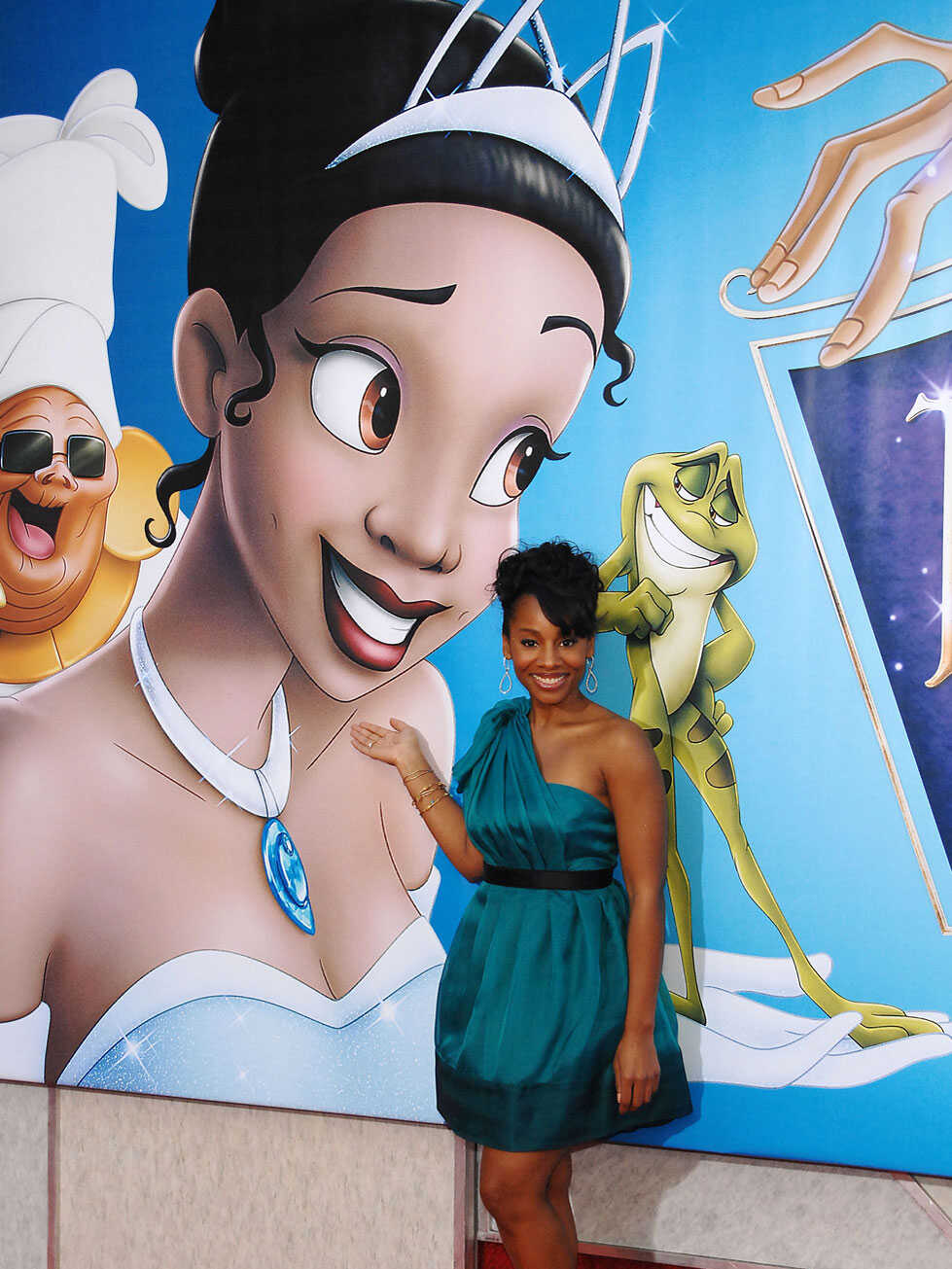Disney Princess That Can Played by Any Race

Actress Anika Noni Rose provides the voice for Princess Tiana, Disney's first black princess, in the movie The Princess and the Frog. Despite the film, many critics question how far the studio has progressed in how it handles race on the big screen. Benkey/JPegFoto/PictureGroup/AP hide caption
toggle caption
Benkey/JPegFoto/PictureGroup/AP

Actress Anika Noni Rose provides the voice for Princess Tiana, Disney's first black princess, in the movie The Princess and the Frog. Despite the film, many critics question how far the studio has progressed in how it handles race on the big screen.
Benkey/JPegFoto/PictureGroup/AP
Tiana, the Walt Disney Co.'s first black heroine, had a difficult transition from storyboard to movie screen: The Princess and the Frog, released late last year, came after months of focus groups, revisions and even a name change. Still, there are some who question how far the studio has really progressed when it comes to race.
Scott Foundas, film editor and critic for LA Weekly, was one of the critics who weren't cheering Disney, writing a piece for The Village Voice titled "Disney's 'Princess and the Frog' Can't Escape Ghetto."
"People who want to say, 'Oh, it's only a movie,' that's really ignoring the impact that films have on the broader culture," Foundas tells NPR's Michele Norris. "Children watching Disney animated films learn something from them about these characters, and how these characters function in society and what they are entitled to and what they're not, and that makes an impression on an impressionable mind."
Foundas says from the time Disney announced the movie in 2006 up until its release, there was much back-and-forth between the studio and special-interest groups that demanded changes. But, he says, both Disney and the groups seemed to have missed the bigger issue: where the film is taking place and how it's distorting history.
"It seemed puzzling to me that after all of this pressure over many years from various groups to create an African-American princess, that when they finally got around to doing it they decided to put her in Jim Crow-era Louisiana, hardly a shining moment in the history of African-Americans in the U.S. in terms of their standing in society," Foundas says. "So that's sort of a trouble spot to begin with."
Foundas calls Disney's record on race problematic and says only some of that can be attributed to social conditions at the time. In the 1920 and '30s, he says, Mickey Mouse and his dog, Pluto, imitated silent-film star Al Jolson in blackface. In the '40s, both Dumbo and Song of the South were infamous for including many risible black caricatures.
"You can say to an extent it [Disney] was a product of its time, [it was] still more than two decades away from the Civil Rights Act at this time; but I don't think that gives Disney a free pass, either," he says. "The other problem is that this is not exactly a syndrome that seems to go away over the years.
"Disney has been criticized for these same issues for films made well after 1964."
Still, he says, Disney has tried to make amends on a case-by-case basis.
"In Princess and the Frog, they are giving us their first African-American princess; in the case of Aladdin, they were giving us the first Arabian princess. In the case of Pocahontas, they were giving us the first Native American princess. In Mulan, we had the Chinese princess," he says.
"They've been sort of making the rounds, you could say. And there's clearly an awareness, I think, on the corporate side about the fact that consumers of Disney products are not exclusively a Caucasian audience, and it took them a little while to get to that."
Disney Princess That Can Played by Any Race
Source: https://www.npr.org/templates/story/story.php?storyId=122152254
0 Response to "Disney Princess That Can Played by Any Race"
Postar um comentário